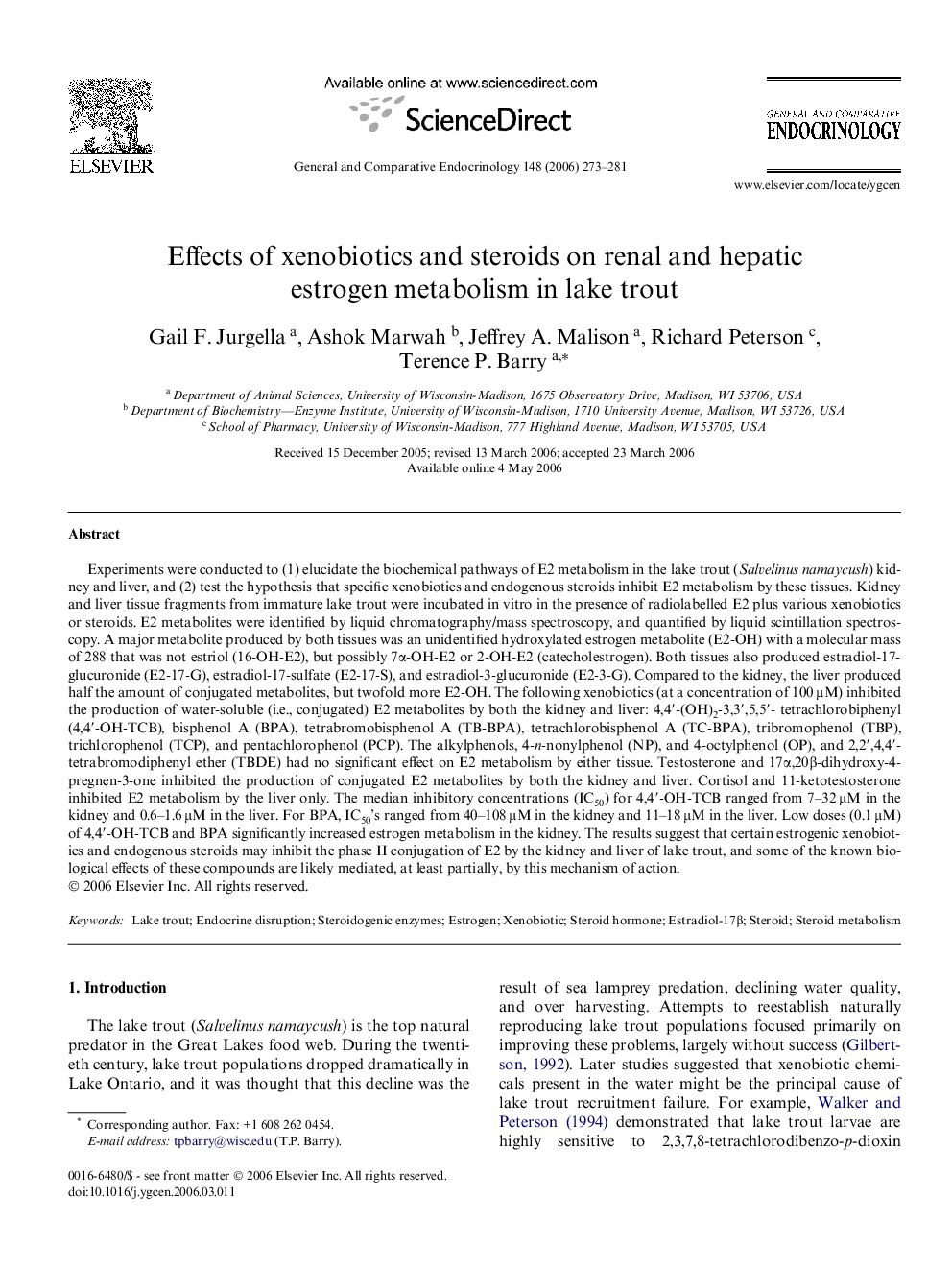| Article ID | Journal | Published Year | Pages | File Type |
|---|---|---|---|---|
| 2802417 | General and Comparative Endocrinology | 2006 | 9 Pages |
Experiments were conducted to (1) elucidate the biochemical pathways of E2 metabolism in the lake trout (Salvelinus namaycush) kidney and liver, and (2) test the hypothesis that specific xenobiotics and endogenous steroids inhibit E2 metabolism by these tissues. Kidney and liver tissue fragments from immature lake trout were incubated in vitro in the presence of radiolabelled E2 plus various xenobiotics or steroids. E2 metabolites were identified by liquid chromatography/mass spectroscopy, and quantified by liquid scintillation spectroscopy. A major metabolite produced by both tissues was an unidentified hydroxylated estrogen metabolite (E2-OH) with a molecular mass of 288 that was not estriol (16-OH-E2), but possibly 7α-OH-E2 or 2-OH-E2 (catecholestrogen). Both tissues also produced estradiol-17-glucuronide (E2-17-G), estradiol-17-sulfate (E2-17-S), and estradiol-3-glucuronide (E2-3-G). Compared to the kidney, the liver produced half the amount of conjugated metabolites, but twofold more E2-OH. The following xenobiotics (at a concentration of 100 μM) inhibited the production of water-soluble (i.e., conjugated) E2 metabolites by both the kidney and liver: 4,4′-(OH)2-3,3′,5,5′- tetrachlorobiphenyl (4,4′-OH-TCB), bisphenol A (BPA), tetrabromobisphenol A (TB-BPA), tetrachlorobisphenol A (TC-BPA), tribromophenol (TBP), trichlorophenol (TCP), and pentachlorophenol (PCP). The alkylphenols, 4-n-nonylphenol (NP), and 4-octylphenol (OP), and 2,2′,4,4′-tetrabromodiphenyl ether (TBDE) had no significant effect on E2 metabolism by either tissue. Testosterone and 17α,20β-dihydroxy-4-pregnen-3-one inhibited the production of conjugated E2 metabolites by both the kidney and liver. Cortisol and 11-ketotestosterone inhibited E2 metabolism by the liver only. The median inhibitory concentrations (IC50) for 4,4′-OH-TCB ranged from 7–32 μM in the kidney and 0.6–1.6 μM in the liver. For BPA, IC50’s ranged from 40–108 μM in the kidney and 11–18 μM in the liver. Low doses (0.1 μM) of 4,4′-OH-TCB and BPA significantly increased estrogen metabolism in the kidney. The results suggest that certain estrogenic xenobiotics and endogenous steroids may inhibit the phase II conjugation of E2 by the kidney and liver of lake trout, and some of the known biological effects of these compounds are likely mediated, at least partially, by this mechanism of action.
